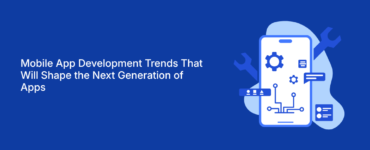React Native continues to gain momentum in the cross-platform development landscape. As of 2024, Stack Overflow’s Developer Survey reports that React Native ranks among the top three most widely used frameworks for mobile development, with over 40% of mobile developers integrating it into their projects. Its appeal lies in the promise of writing once and running on both Android and iOS, significantly reducing development time and cost.
However, many teams fall into the trap of repeating common React Native mistakes that hinder app performance, scalability, and maintainability. Below, we’ll explore ten critical React Native development mistakes you must avoid—with insights grounded in real-world application and aligned with React Native best practices.
1. Assuming Everything Will Work the Same on iOS and Android
It’s easy to think that because React Native supports both platforms, your app will behave the same on both. That’s not true. Each platform has its own design rules, behaviors, and technical quirks.
Why it’s a mistake: Something that looks perfect on Android might feel out of place on iOS, or vice versa.
What to do instead: Test your app on both platforms regularly during development, and adjust layouts or features where needed. Respect the platform’s user experience.
2. Overusing External Libraries
There are thousands of ready-made libraries for React Native — but using too many can slow your app down, create conflicts, or make updates harder.
Why it’s risky: Some libraries are outdated or no longer maintained, which can break your app with future updates.
What to do instead: Before adding a new library, ask yourself if you really need it. Check how recently it was updated and whether it solves a real problem. Less is more.
3. Not Planning App Structure from the Start
It’s common to start fast and organize the app as you go. But as features grow, that lack of structure causes problems.
What goes wrong: Everything feels messy — files are hard to find, bugs take longer to fix, and the code is hard to understand for new developers.
What to do instead: Create a clear folder structure early, like separating screens, components, and services. Even a simple plan helps keep things clean and scalable.
4. Forgetting to Optimize Images and Assets
Large images or uncompressed assets can slow down your app significantly, especially on older phones or slower connections.
Why it’s important: Users expect fast apps. A delay of even 2–3 seconds can make them uninstall.
What to do instead: Compress images before adding them to your project. Use appropriate sizes and avoid loading too many large files on one screen.
5. Not Handling Errors Properly
If your app crashes or shows a blank screen when something goes wrong, users won’t stick around. Every app has issues — but handling them well makes a big difference.
The common mistake: No error messages, no feedback, and no tools to track crashes.
What to do instead: Show friendly error messages when something fails. Use tools like Firebase Crashlytics or Sentry to track problems in real time.
6. Ignoring Performance
React Native apps can become slow if you don’t think about performance. Long loading times, laggy animations, and delayed taps create a bad user experience.
What causes it: Too many re-renders, unnecessary features on one screen, or not optimizing lists and media.
What to do instead: Keep screens simple. Use scrollable lists wisely. Load data only when needed and avoid unnecessary animations.
7. Skipping Testing
Many developers wait until the app is nearly finished before testing it. That leads to bigger issues and more time spent fixing things later.
The danger: Bugs slip into the live version. Features don’t work as expected. Users find problems before you do.
What to do instead: Test your app regularly while building it. Even manual testing is better than none. Write simple checks for important features like login, forms, and navigation.
8. Using One Component for Everything
Trying to build an entire screen or feature inside one huge file is a recipe for trouble.
Why it’s bad: It makes your code hard to read, reuse, or update. Bugs become harder to track down.
Better approach: Break your code into smaller parts. For example, if a screen has a header, form, and list — make each one its own component. It keeps your project clean and manageable.
9. Not Preparing for Offline or Poor Network
Mobile users aren’t always online — yet many apps fail completely when the internet connection drops.
The mistake: No offline support, no loading indicators, or data loss when the network disconnects.
What to do instead: Add loading spinners when fetching data. Save important info locally when possible. Let users know when they’re offline.
10. Rushing to Publish Without Real-World Testing
Testing in the simulator is helpful, but it’s not enough. Real devices behave differently — especially older phones.
What happens: The app feels great in development but crashes or lags on real devices.
What to do instead: Test on at least one physical Android and iOS device. Ask a few friends or team members to try it out. Real feedback catches things you won’t see in development.
Final Thoughts
React Native is a powerful way to build mobile apps, but avoiding these React Native development mistakes will help you save time, reduce bugs, and improve the quality of your app.
Remember, it’s not about doing everything perfectly from day one — it’s about improving step by step. Stick to React Native best practices, stay aware of common React Native mistakes, and always test your work in real-world conditions.
If you avoid these ten issues, you’re already ahead of most beginners — and your users will thank you for it.
FAQs on React Native Development Mistakes
1. What are the most common React Native development mistakes beginners make?
Beginners often make mistakes such as treating React Native like web development, overusing third-party libraries, and ignoring platform-specific design standards. These React Native development mistakes can lead to poor performance, confusing user interfaces, and compatibility issues.
2. How do React Native development mistakes affect app performance?
Mistakes like unoptimized image usage, improper list rendering, and lack of testing can significantly slow down your app. These React Native development mistakes increase load times, consume more memory, and create laggy user experiences.
3. Can React Native development mistakes cause apps to crash?
Yes, common React Native development mistakes like skipping error handling, ignoring async function safety, or using outdated libraries can cause crashes, especially in real-world usage on older devices or poor network conditions.
4. How can I avoid React Native development mistakes when building my first app?
To avoid React Native development mistakes, plan your app’s structure, use well-maintained libraries, test regularly, and follow React Native best practices. Also, test on both iOS and Android devices to catch platform-specific issues early.
5. Why is it important to learn from React Native development mistakes?
Learning from React Native development mistakes helps developers write cleaner, more efficient code, reduce bugs, and improve user satisfaction. It also shortens development time in the long run by preventing repeated errors.




